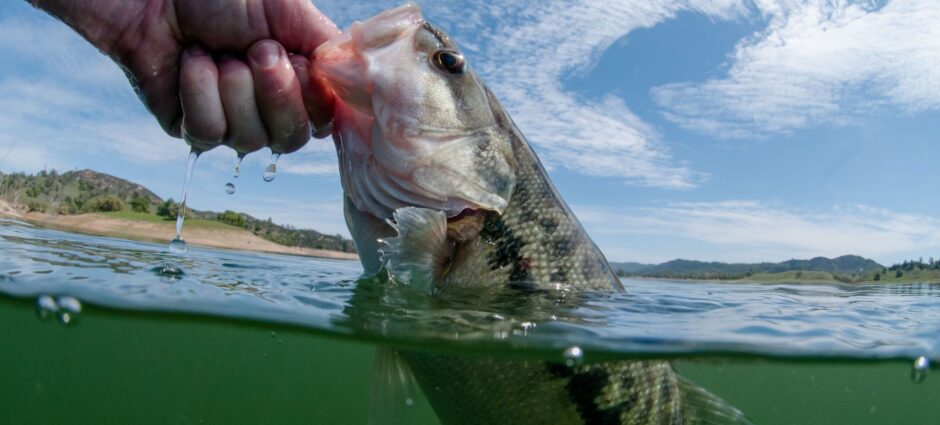Pre-Spawn
During pre-spawn, spotted bass are coming out of the deeper water as they are getting ready to start their spawn. Bass will start moving to shallower water as temperatures rise above 50 degrees. As these bass transition from deeper water, you can catch them just outside of their spawning areas. These staging areas include any areas with some deeper water near the shallower spawning grounds. Main lake points and quick drop-offs near spawning bays are great places to fish. During the spring, several types of baits will work, but the jerkbait bite is usually one of the best patterns to fish.
Spawn
Once the water reaches 55 degrees, the males start to build the nests. Actually, spawning will take place in 59-64 degrees of water, which is a few degrees cooler than largemouth bass. They will build their nests in 2 – 4 feet of water, however, in clear lakes, spotted bass nests can be spotted deeper, so don’t be shocked if you see some beds in 8, 10, 12 feet of water and even deeper. When the bass are actually on the nests, they are there for one reason and this is to spawn. Bass will usually refuse to eat during spawning, however, there are some ways to coax them into biting your bait. They will instinctively protect their nest, so any bait that looks like a threat to their nest has a chance to get bit. Try jigs, plastic worms, buzzbaits, tubes, spinnerbaits and shallow crankbaits. Sometimes a faster lure gets a reaction strike and other times a slow-moving lure sitting in their nest will trigger a strike. Fishing with live bait can be very effective. Small minnows, night crawlers and leeches will produce during the spawn. Sometimes bass will pick up a bait and move it out of the spawning bed. If you put it right back in the bed, they might get agitated and take the whole bait. You have to be persistent to catch bass on the beds. so you can release the bass quickly.
Post Spawn
This period can be very exciting for catching large numbers of bass, however, they will be much smaller. The females head into deeper water to recover from spawning. The females tend to be inactive during this time, making it very difficult for anglers to catch some of the big females. The post-spawn period is one of the worst times of year to catch big fish, but there are usually plenty of smaller males hanging around to protect the nests. They will attack many different presentations, so fish your favorite lures for spotted bass and you should do well.
If you are going to look for the big females that just finished up spawning, head to the deep water hangouts near the better spawning areas. Fish slow and give these fish a chance to eat your bait because they will most likely be sluggish as they are recovering from the spawn.


